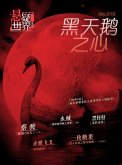
5,99 €
Sofort per Download lieferbar
eBook, PDF
28. April 2014
Zhejiang Publishing United Group Digital Media Co., Ltd

5,99 €
Sofort per Download lieferbar
eBook, PDF
15. Oktober 2014
Zhejiang Publishing United Group Digital Media Co.,Ltd
5,99 €
Sofort per Download lieferbar
eBook, PDF
28. April 2014
Zhejiang Publishing United Group Digital Media Co., Ltd
5,99 €
Sofort per Download lieferbar
eBook, PDF
15. September 2014
Zhejiang Publishing United Group Digital Media Co.,Ltd
5,99 €
Sofort per Download lieferbar
eBook, PDF
15. Juli 2014
Zhejiang Publishing United Group Digital Media Co.,Ltd
5,99 €
Sofort per Download lieferbar
eBook, PDF
7. August 2014
Zhejiang Publishing United Group Digital Media Co.,Ltd
1,99 €
Sofort per Download lieferbar
3,99 €
Sofort per Download lieferbar
eBook, ePUB
14. April 2014
Zhejiang Publishing United Group Digital Media Co., Ltd
3,99 €
Sofort per Download lieferbar
eBook, ePUB
19. März 2014
Zhejiang Publishing United Group Digital Media Co., Ltd
2,99 €
Sofort per Download lieferbar
eBook, ePUB
14. April 2014
Zhejiang Publishing United Group Digital Media Co., Ltd
2,99 €
Sofort per Download lieferbar
eBook, ePUB
14. April 2014
Zhejiang Publishing United Group Digital Media Co., Ltd
2,99 €
Sofort per Download lieferbar
eBook, ePUB
14. April 2014
Zhejiang Publishing United Group Digital Media Co., Ltd
2,99 €
Sofort per Download lieferbar
eBook, ePUB
14. April 2014
Zhejiang Publishing United Group Digital Media Co., Ltd
2,99 €
Sofort per Download lieferbar
eBook, ePUB
14. April 2014
Zhejiang Publishing United Group Digital Media Co., Ltd
2,99 €
Sofort per Download lieferbar
eBook, ePUB
14. April 2014
Zhejiang Publishing United Group Digital Media Co., Ltd
Ähnlichkeitssuche: Fact®Finder von OMIKRON
